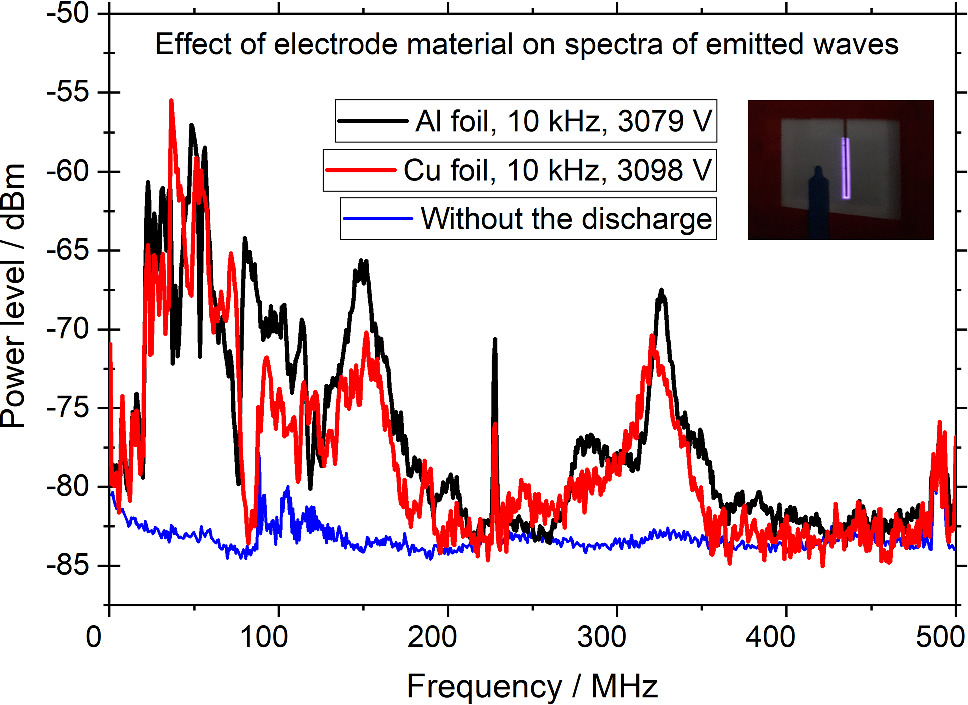https://doi.org/10.1140/epjd/s10053-024-00887-7
Regular Article - Plasma Physics
Driving voltage frequency and electrode material effects on electromagnetic radiation of the surface dielectric barrier discharge in the air
Czech Technical University in Prague, Faculty of Electrical Engineering, Technická 2, 166 27, Prague 6, Czech Republic
Received:
29
January
2024
Accepted:
19
June
2024
Published online:
4
July
2024
The electrical discharges are, among others, accompanied by the emission of electromagnetic waves of various frequencies. We studied this emission for the surface dielectric barrier discharge in the air. We used the discharge with one strip-driven electrode and a sinusoidal driving voltage of frequencies 5 and 10 kHz. From the spectra of emitted waves in the frequency band up to 3 GHz, we found that this type of discharge emits the radiation of frequencies below 500 MHz. In this frequency band, we focused on the effect of the driving voltage frequency and driven electrode material on the spectra of these waves. It was found that emitted radiation is distributed in several packages of frequencies, and an increase in the driving voltage frequency or voltage increases the power level of emitted radiation. Compared with the radiation spectrum of the discharge with an aluminium-driven electrode in the spectrum of the discharge with the copper-driven electrode, new peaks of various power levels and the shift of certain radiation frequencies to lower values appear. To understand the underlying mechanism of the discharge electromagnetic waves emission, we focused on the correlation between the electric component of emitted EMWs and the discharge electrical parameters as a function of time and discharge voltage.
© The Author(s) 2024
 Open Access This article is licensed under a Creative Commons Attribution 4.0 International License, which permits use, sharing, adaptation, distribution and reproduction in any medium or format, as long as you give appropriate credit to the original author(s) and the source, provide a link to the Creative Commons licence, and indicate if changes were made. The images or other third party material in this article are included in the article's Creative Commons licence, unless indicated otherwise in a credit line to the material. If material is not included in the article's Creative Commons licence and your intended use is not permitted by statutory regulation or exceeds the permitted use, you will need to obtain permission directly from the copyright holder. To view a copy of this licence, visit http://creativecommons.org/licenses/by/4.0/.
Open Access This article is licensed under a Creative Commons Attribution 4.0 International License, which permits use, sharing, adaptation, distribution and reproduction in any medium or format, as long as you give appropriate credit to the original author(s) and the source, provide a link to the Creative Commons licence, and indicate if changes were made. The images or other third party material in this article are included in the article's Creative Commons licence, unless indicated otherwise in a credit line to the material. If material is not included in the article's Creative Commons licence and your intended use is not permitted by statutory regulation or exceeds the permitted use, you will need to obtain permission directly from the copyright holder. To view a copy of this licence, visit http://creativecommons.org/licenses/by/4.0/.





